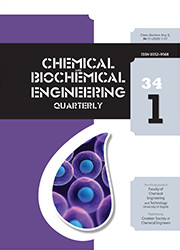Capability of a biosurfactant produced by Pseudomonas stutzeri Z12 for the removal of hydrocarbons from oily sludge contaminated soil was investigated. The effect of operating parameters, including pH, critical micelle concentration (CMC), salinity, and contact time were studied. The chemical structure of produced biosurfactant was characterized using FTIR and LC-MS-MS analysis, which revealed that the extracted biosurfactant was a combination of both mono- and di-rhamnolipid congeners. The main three congeners RhaC12:1C10 (529.9 m z–1), RhaC12C10 (531 m z–1), and RhaC10C10 (503.2 m z–1) were associated to mono-rhamnolipid, while five congeners, RhaRhaC10C8 (621.2 m z–1), RhaRhaC12C12 (707.7), RhaRhaC10C12 (677.1), RhaRhaC10C12:1 (675.3 m z–1), and RhaRhaC10C1 (649.5 m z–1) were associated to di-rhamnolipid structures. The critical micelle concentration (CMC) was 80 mg L–1, and emulsification index (E24) values for n-hexadecane, n-hexane, kerosene, diesel oil, xylene, and crude oil were 62.1, 57.6, 54.4, 41.5, 46.9, and 30.2 %, respectively.
Sažetak
Dio od

 Chemical & biochemical engineering quarterly : the international publication of "Kemija u industriji" : the official journal of Croatian Society of Chemical Engineers, Faculty of Chemical Engineering and Technology University of Zagreb, Slovenian Chemical Society, and Austrian Association of Bioprocess Technology : 34,1(2020) / co-editors-in-chief M. Rogošić, B. Zelić.
Chemical & biochemical engineering quarterly : the international publication of "Kemija u industriji" : the official journal of Croatian Society of Chemical Engineers, Faculty of Chemical Engineering and Technology University of Zagreb, Slovenian Chemical Society, and Austrian Association of Bioprocess Technology : 34,1(2020) / co-editors-in-chief M. Rogošić, B. Zelić.